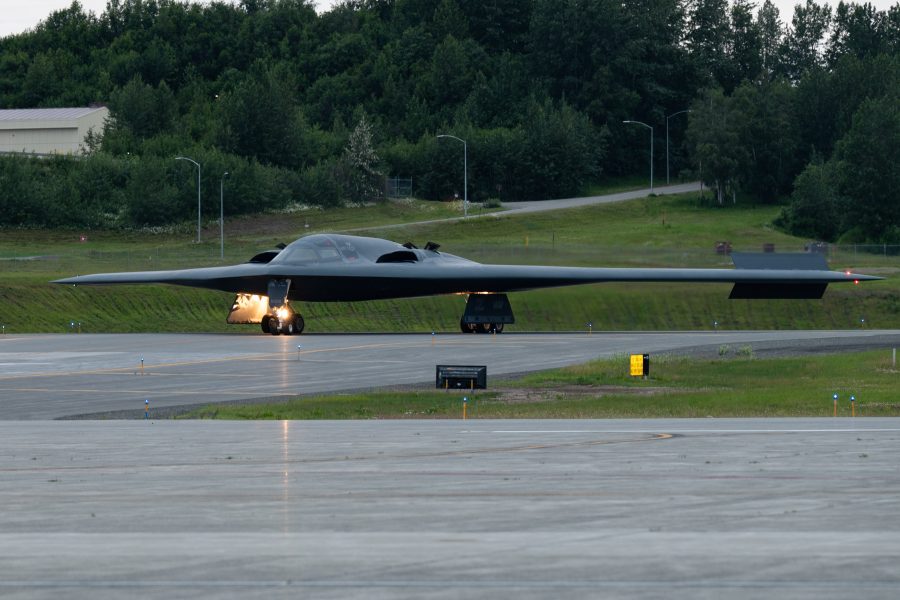Northrop Grumman and the Air Force successfully demonstrated a new mission update system for the B-2 bomber in a two-day event at Whiteman Air Force Base, Mo., last month. The system receives new mission parameters and feeds them directly into the B-2’s computers without the need for the pilots to manually input the data.
The Integrated Airborne Mission Transfer (IAMT) demonstration started July 18 after B-2 No. 1086, the Spirit of Kitty Hawk, was fitted with Northrop’s Multi-Mission Domain (MMD) open-mission architecture, meant to make adding new mission capabilities easier.
Essentially, MMD “separates the mission systems of the B-2 from the flight/safety critical systems,” allowing the insertion of new capabilities “without extensive testing,” a Northrop spokesperson told Air & Space Forces Magazine. “This will speed up the delivery of new capabilities to the warfighter keeping the B-2 relevant for years to come,” she added.
For the demonstration, MMD integrated with the B-2’s Adaptable Communications Suite (ACS). The aircrew would receive incoming transmissions from a ground station, “which loaded the mission directly through MMD interfaces to the B-2 Disk Drive Unit,” according to a Northrop Grumman press release.
With the way the rest of the B-2 fleet is configured, aircrews has to manually transfer mission updates from the ACS. In contrast, the new technology “will allow direct transfer to the disk drive unit in seconds,” the Northrop spokesperson said.
“IAMT is the first of many possible combat applications that can be hosted on the B-2 via MMD which will rapidly integrate new software capabilities onto the B-2 in the coming years,” she added.
The system not only allow aircrews to focus on executing the mission at hand, it also eliminates the chance of potential errors that might be introduced by manually updating mission parameters, Northrop officials noted.
All told, the demonstration included 50 machine-to-machine mission updates. Senior officials from the B-2 System Program Office, Global Strike Command, and the 509th Bomb Wing observed.
Nikki Kodama, Northrop’s B-2 program manager, said the company is showing that the bomber can “communicate and operate in Advanced Battle Management Systems (ABMS) and the Joint All-Domain Command and Control (JADC2) environment, keeping B-2 ahead of evolving threats.”
The integration of the software will “further enhance the connectivity and survivability in highly contested environments as part of our ongoing modernization effort,” she added.
The demo is part of the B-2 Collaborative Combat Communication (B2C3) Spiral 1 program, which is intended to enhance the B-2’s digital communications capabilities. The spokesperson said the plan is to outfit the entire 20-aircraft B-2 force with the MMD, with the modifications to be done at Whiteman. The company did not specify a timetable for the mods.
Air Force officials have said recently they do not have a firm retirement date for the B-2, instead emphasizing that it will fly until the new B-21 Raider is ready. The bomber only recently returned to the skies in May, after a roughly six-month safety pause following a mishap in December. In July, the bomber made its first appearance in a major exercise since the pause, flying in Alaska. This most recent technology demonstration was not part of any larger exercise.
